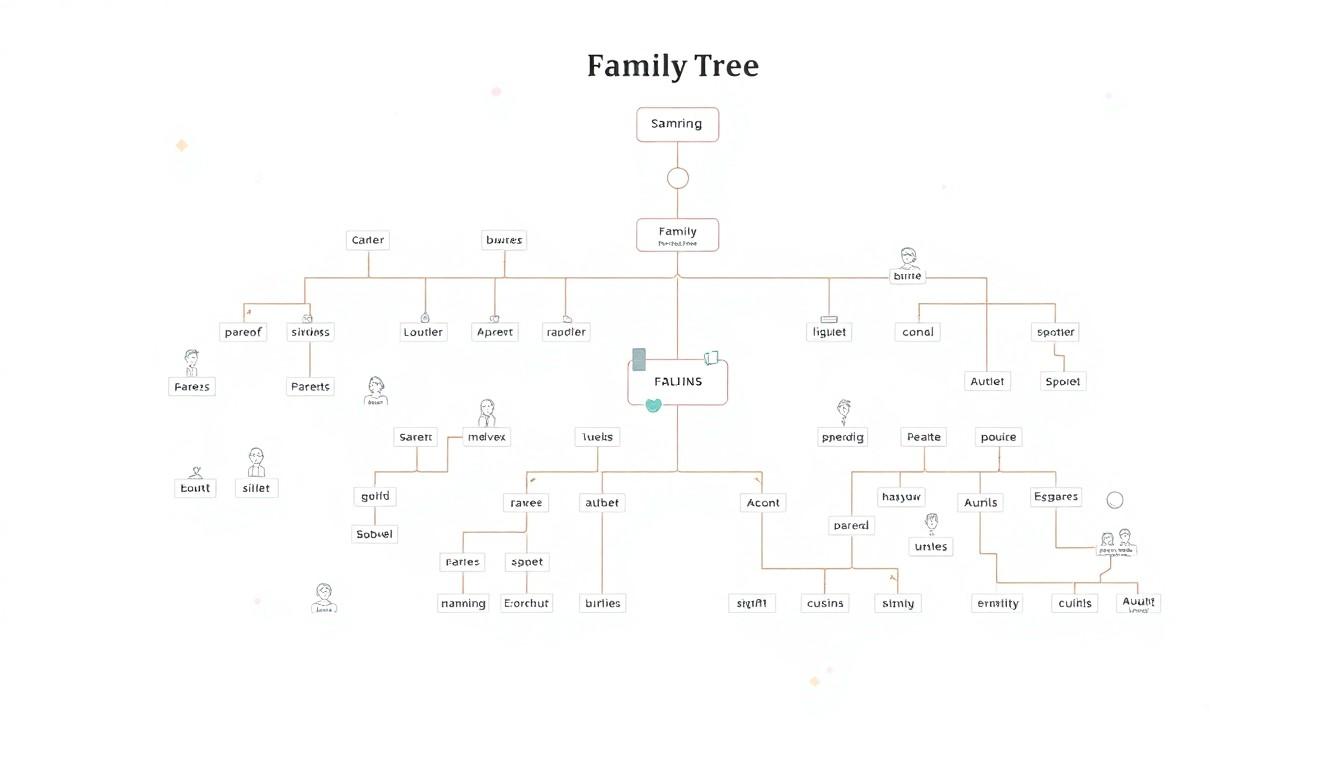The Best Fluffy Pancakes recipe you will fall in love with. Full of tips and tricks to help you make the best pancakes.

Family Tree Relationships Chart: Unlocking Your Family History Like Never Before
Ever wondered how Aunt Mildred is related to Cousin Joe, or why Grandma insists on calling everyone “sweetheart”? Family trees can feel like a tangled web of relationships, but fear not! A family tree relationships chart is here to save the day. It’s like a GPS for your lineage, guiding you through the maze of relatives and their quirky connections.
Family Tree Relationships Chart
A family tree relationships chart visually represents familial connections. This tool simplifies the understanding of complex relationships among family members.
Definition and Purpose
A family tree relationships chart defines the structure of family connections. It outlines relationships such as parents, siblings, grandparents, aunts, and cousins. By providing a clear layout, this chart communicates how individuals relate to one another within a family. Its primary purpose lies in helping individuals trace lineage and comprehend family dynamics efficiently. This clarity assists genealogists, historians, and anyone interested in family heritage.
Importance of Family Tree Chart
Family tree charts hold significant importance in various contexts. They facilitate the identification of relationships among family members, which is crucial for familial bonding. Understanding these connections can enhance family reunions and celebrations. Additionally, these charts serve as valuable resources in legal matters, inheritance cases, and medical histories. Genealogical research becomes simpler when one can visualize relationships accurately. Creating a family tree chart promotes learning about family narratives and preserving heritage across generations.
Components of a Family Tree Relationships Chart

A family tree relationships chart includes several key elements that clarify familial connections. Understanding these components enhances comprehension of family networks and lineage.
Family Members and Their Roles
Family members fulfill distinct roles within the family structure. Parents nurture children, while siblings share a unique bond rooted in shared history. Grandparents provide wisdom and continuity. Aunts and uncles often support family dynamics, acting as additional figures of authority and care. Cousins represent the next generation, fostering friendships that can last a lifetime. Each role contributes to the overall understanding of family ties.
Types of Relationships Illustrated
The chart illustrates various types of relationships that exist within families. Direct relationships include those between parents and children, showcasing lineage. Extended relationships highlight connections like aunts, uncles, and cousins, revealing the broader family network. Marital relationships emphasize partnerships and in-laws, expanding the family tree beyond blood relations. Each type of relationship plays a crucial role in illustrating the complexity and richness of familial connections.
Creating Your Own Family Tree Relationships Chart
Creating a family tree relationships chart requires clarity and the right tools. Several options simplify this process, from specific software to online platforms.
Tools and Software Options
Multiple tools aid in mapping family connections effectively. Online platforms like Ancestry and MyHeritage offer user-friendly interfaces for building charts. Software such as Family Tree Builder provides downloadable solutions for offline work. Mobile apps facilitate access on-the-go, ensuring portability of family data. Visual design tools enhance the aesthetic appearance of charts, making them more engaging for family gatherings. Comparison among these options helps individuals select the right fit based on their preferences.
Step-by-Step Guide
Following a systematic approach ensures accuracy in creating a family tree relationships chart. Begin by gathering information about family members, including names, birth dates, and relationships. Construct the chart starting with immediate family, then expand to include extended families like aunts and cousins. Use clear lines to indicate relationships between individuals. Incorporate visual elements to distinguish between direct and extended connections. Regular updates maintain the chart as family dynamics change. Sharing the chart with relatives encourages collaborative efforts in preserving family heritage.
Analyzing Family Dynamics Through the Chart
The family tree relationships chart serves as a powerful tool for examining family dynamics. It reveals various relationships and interactions among family members, which can lead to identifying patterns and trends.
Identifying Patterns and Trends
Patterns often emerge when analyzing family connections. Regular attendance at family gatherings can indicate strong ties among certain relatives. Sibling relationships frequently express levels of support and rivalry, which may affect their interactions. Marriage connections also demonstrate how families merge and create new relationships, impacting traditions over generations. Noting these trends helps families understand historical dynamics and address current issues or conflicts.
Cultural Influences on Family Structures
Cultural background significantly shapes family structures. Diverse traditions often dictate roles within a family, such as responsibilities assumed by grandparents, parents, and children. In some cultures, extended family plays a central role in daily life, demonstrating close-knit relationships that enhance community support. Norms surrounding marriage and family size can also vary, affecting how family trees develop. Recognizing these cultural influences aids in understanding the complexities of familial relationships and their evolution over time.
A family tree relationships chart is an invaluable resource for anyone looking to navigate the intricate web of familial connections. By visually representing relationships it simplifies understanding and fosters a deeper appreciation for family dynamics. This tool not only aids in genealogy research but also strengthens family bonds by encouraging collaboration and sharing of histories.
Creating a personalized family tree chart can be a rewarding experience that connects generations. As families evolve it’s essential to keep these charts updated, reflecting new relationships and changes. Embracing this practice not only preserves family narratives but also honors the unique stories that shape each family’s legacy.
